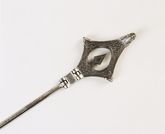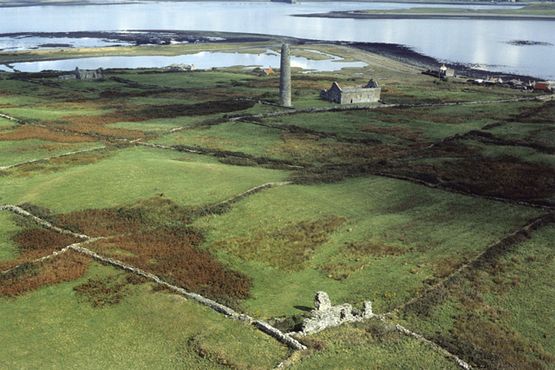Limerick
Unlike Dublin and Waterford, archaeological evidence for the Viking town of Limerick remains for the most part elusive. The majority of the evidence comes from historical sources.
The likely site of the Viking settlement is situated just north of the confluence of the river Shannon and its tributary, the Abbey river and would have been an ideal location for settlement, easy to defend and close to a crossing point.
Although there are some references to a ninth-century settlement in Limerick, the permanent settlement appears to have been established in 922AD by Tamar MacAilche. This period saw struggles between Vikings in Dublin and Limerick. Attacks by Dublin Vikings on Clonmacnoise in 942 and 946 have been interpreted as an indication that the Limerick Vikings may have been kept in a subordinate position between 937 and 967.
In 967 Limerick was captured by the Ua Briain (Dál Cáis), after which time the Hiberno-Norse town emerged. Toirrdelbach Ua Briain, King of Munster between 1063 and 1086, made Limerick his capital, and this continued during the reign of his successor, Muirchertach Ua Briain. It flourished during this period, and its first bishop was consecrated in 1107.
Although archaeological evidence in the city has yet to be uncovered, there are a number of important finds from the Limerick area.
Nordic Style Kite-brooch
During the ninth and tenth centuries large quantities of silver came into circulation in Ireland. This was largely due to Viking activity in the country, and their opening of trade routes to the east. Silver circulated in the form of coins, ornaments, ingots and hack-silver, and the artefacts are some of the most important evidence for Scandinavian activity in Ireland.
This kite-brooch, dating to the early tenth century, was found with another near the Limerick. The pair were discovered in 1845 during the construction of the Limerick-Tipperary railway line. The name kite-brooch derives from the shape of the head of the brooch, which is attached to the pin by a hinged tag. Silver kite-shaped brooches are quite rare in Ireland, and these examples are exceptionally large. The style of these brooches indicates that they have been made in Dublin, where several copper-alloy examples have been found. The size is a clear indication of the availability of large quantities of silver in Ireland at this period.
Scattery Island
Ireland’s rivers were crucial to the success of the Vikings in penetrating further inland in Ireland. Scattery Island is an island monastery in the Shannon estuary, close to Limerick. It was raided by the Vikings in the ninth century. The name Scattery is an Old Norse re-formation of the Irish Inis Cathaig. The monastery is dedicated to St. Senan. During the 970s the Annals of Inishfallen record that Norse kings of Limerick were resident at Scattery Island.
By: Maeve Sikora, National Museum of Ireland
Literature
Clarke, H.B. (ed.) 1995. Irish Cities.
Wallace, P.F. 1992. 'The Archaeological identity of the Hiberno-Norse town' Journal of the Royal Society of Antiquaries of Ireland 122, 35-66.

